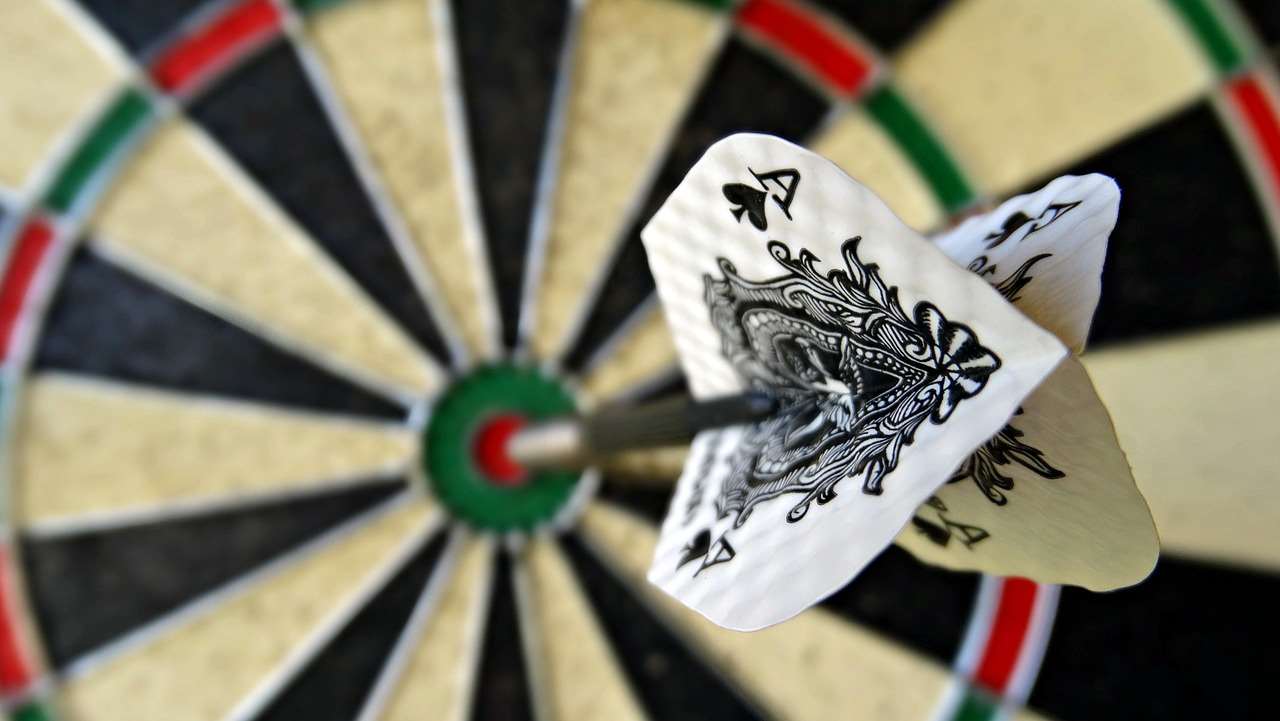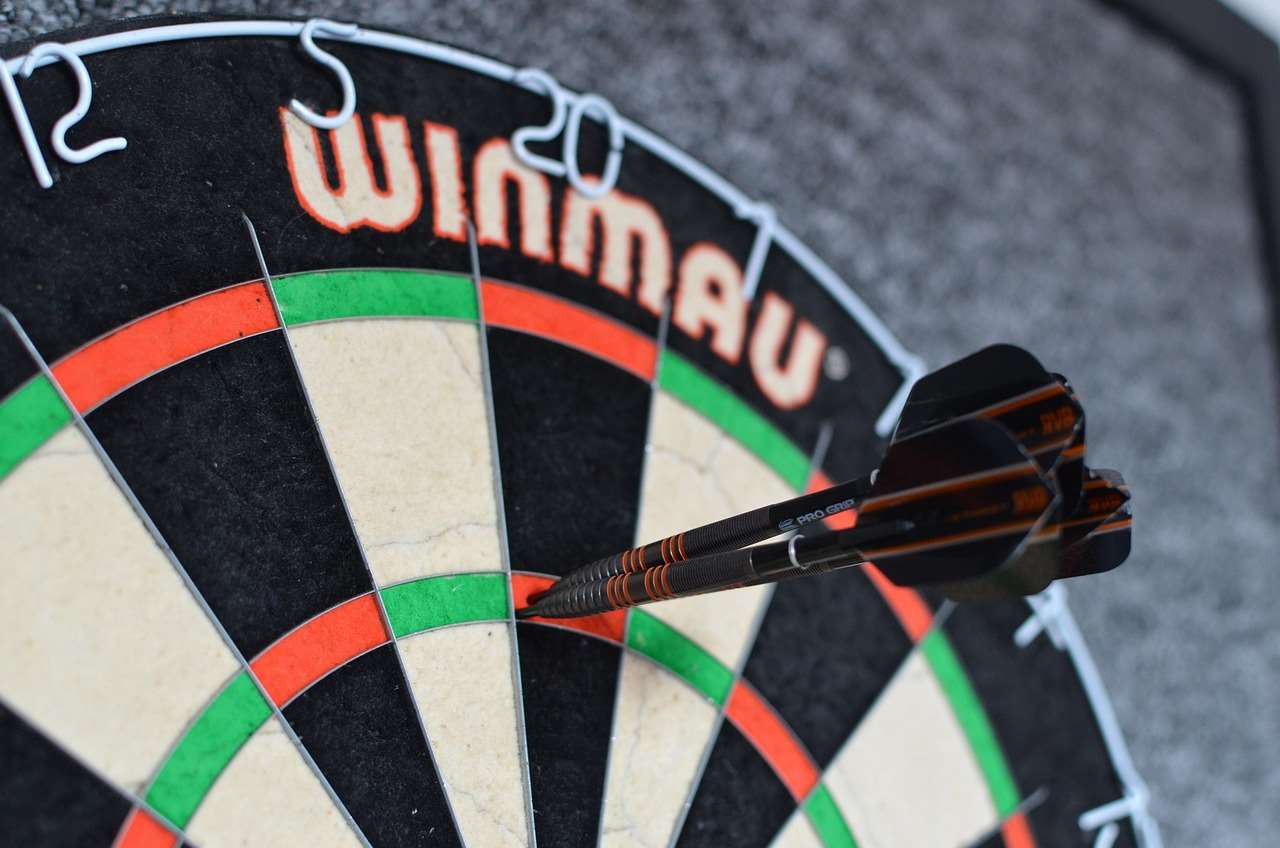Darts broadcasting rights explained simply come down to agreements between darts organizations like the PDC and WDF, and media companies like Sky Sports, ITV, and DAZN, for the exclusive right to show tournaments to viewers. This article will delve into the complexities of these deals, exploring the factors that influence their value, the key players involved, and the evolving landscape of **darts streaming rights cost**.
⚠️ Still Using Pen & Paper (or a Chalkboard)?! ⚠️
Step into the future! The Dart Counter App handles all the scoring, suggests checkouts, and tracks your stats automatically. It's easier than you think!
Try the Smart Dart Counter App FREE!Ready for an upgrade? Click above!
Understanding Darts Broadcasting Rights Explained
Securing darts broadcasting rights is a crucial element in the sport’s commercial success and global reach. These rights, auctioned and negotiated between darts governing bodies and broadcasters, dictate who can televise or stream live tournaments, highlights packages, and other related content. The revenue generated from these agreements is reinvested into the sport, funding prize money, marketing initiatives, and the overall development of darts at all levels.

Key Factors Influencing Broadcasting Rights Value
Several factors determine the value of **darts tv rights value**. Broadcasters assess potential viewership, advertising revenue, and the overall appeal of the sport to their target demographic. Here are some of the key considerations:
- Tournament Popularity: Major tournaments like the PDC World Darts Championship and the Premier League Darts command higher fees due to their large viewership and prestige.
- Star Power: The presence of charismatic and talented players significantly boosts viewership. Broadcasters pay a premium to showcase players like Michael van Gerwen, Gerwyn Price, and Luke Humphries.
- Geographical Reach: Rights encompassing multiple territories are more valuable than those limited to a single country. Expansion into new markets is a significant driver.
- Production Quality: High-definition broadcasts, engaging commentary, and innovative camera angles enhance the viewing experience and justify higher fees.
- Competition Among Broadcasters: When multiple networks bid for rights, the price inevitably increases.
The Key Players in Darts Broadcasting
The landscape of **how darts media deals work** involves various stakeholders. Here’s a look at some of the major players:
- Professional Darts Corporation (PDC): The dominant force in professional darts, the PDC organizes major tournaments and controls their broadcasting rights. The PDC Sky Sports deal worth is a cornerstone of their revenue stream.
- World Darts Federation (WDF): The WDF governs amateur and professional darts globally, organizing the WDF World Championships and other events. Their WDF darts media coverage deal are focused on expanding the sport’s reach at a grassroots level.
- Sky Sports: A long-term partner of the PDC, Sky Sports holds exclusive rights to broadcast many major darts tournaments in the UK and Ireland.
- ITV: ITV has also invested heavily in darts broadcasting in recent years. The ITV darts broadcast deal ensures wide reach within the UK.
- DAZN: DAZN is a global sports streaming service that has acquired darts broadcasting rights in various territories. Their DAZN darts streaming deal highlights the increasing importance of digital platforms.
- Viaplay: Viaplay darts rights europe extend to several countries.

Negotiation of Darts TV Rights
The negotiation darts tv rights is a complex process involving detailed analysis of viewership data, market trends, and the strategic goals of both the darts organizations and the broadcasters. Here’s a glimpse into the process:
- Rights Assessment: Darts organizations assess the value of their broadcasting rights based on historical viewership data, tournament popularity, and the star power of participating players.
- Request for Proposals (RFP): Organizations issue RFPs to potential broadcasters, outlining the available rights and seeking bids.
- Bidding Process: Broadcasters submit bids based on their assessment of the potential return on investment.
- Negotiation: Darts organizations negotiate with the highest bidders to secure the most favorable terms, including fees, broadcast schedules, and promotional commitments.
- Contractual Agreement: Once an agreement is reached, a formal contract is signed, outlining the rights and responsibilities of each party.
The Rise of Streaming and Digital Platforms
The advent of streaming services has revolutionized the broadcasting landscape, and darts is no exception. Platforms like DAZN, Viaplay, and even dedicated PDC streaming services have emerged as significant players. This shift offers several advantages:
- Increased Accessibility: Streaming services offer viewers more flexibility and convenience, allowing them to watch darts on their preferred devices, anytime, anywhere.
- Expanded Reach: Streaming platforms can reach a global audience, expanding the sport’s reach beyond traditional television markets.
- Enhanced Viewing Experience: Streaming services often offer interactive features, such as live chat, real-time statistics, and on-demand replays.

The Future of Darts Broadcasting
The future of darts broadcasting is likely to be shaped by several key trends:
- Continued Growth of Streaming: Streaming services will continue to gain market share, challenging the dominance of traditional television broadcasters.
- Increased Internationalization: Darts will continue to expand into new markets, driving demand for international broadcasting rights.
- Technological Innovation: Advancements in technology will enhance the viewing experience, with features like virtual reality and augmented reality becoming more prevalent.
- Focus on Fan Engagement: Broadcasters will increasingly focus on engaging fans through social media, interactive content, and personalized experiences.
Impact on the Business of Darts
The revenue generated from **darts broadcasting rights** has a profound impact on the Business of Darts. It allows darts organizations to invest in the sport’s growth, fund prize money, and attract sponsors. The increasing value of these rights reflects the growing popularity and commercial appeal of darts worldwide.

Tips for Negotiating Favorable Broadcasting Deals
For darts organizations seeking to maximize the value of their broadcasting rights, here are some practical tips:
- Understand Your Audience: Conduct thorough research to understand the demographics, viewing habits, and preferences of your target audience.
- Showcase Your Assets: Highlight the unique selling points of your tournaments, players, and overall brand.
- Foster Competition: Encourage multiple broadcasters to bid for your rights to drive up the price.
- Be Flexible: Be willing to negotiate on various terms, such as broadcast schedules, promotional commitments, and digital rights.
- Build Long-Term Relationships: Cultivate strong relationships with broadcasters to foster trust and collaboration.
Related Keywords and Their Significance
The understanding of related keywords is crucial in the context of **darts broadcasting rights explained**. These keywords highlight various facets of the topic:
- Darts TV Rights Value: The monetary worth of the rights to broadcast darts events.
- How Darts Media Deals Work: The processes and strategies involved in creating darts broadcasting agreements.
- PDC Sky Sports Deal Worth: Specifically refers to the value and implications of the long-standing partnership between the PDC and Sky Sports.
- Negotiation Darts TV Rights: The art and science of securing favorable terms in broadcasting deals.
- Darts Streaming Rights Cost: The pricing structure and factors influencing the cost of streaming darts content.

Addressing Common Misconceptions
There are several common misconceptions regarding darts broadcasting rights:
- All rights are equal: The value of rights varies significantly depending on the tournament, territory, and platform.
- Only major tournaments matter: Regional and developmental tournaments also hold value, particularly for niche broadcasters and streaming services.
- Streaming will completely replace television: While streaming is growing rapidly, traditional television remains a significant platform for darts broadcasting, particularly for major events.
Conclusion
In conclusion, darts broadcasting rights explained reveal a dynamic and evolving landscape where the value of these rights is driven by tournament popularity, star power, geographical reach, and technological innovation. Understanding the key players involved, the negotiation process, and the impact of streaming platforms is crucial for stakeholders seeking to maximize the commercial potential of darts. By implementing effective negotiation strategies and adapting to emerging trends, darts organizations can secure lucrative broadcasting deals that fuel the sport’s continued growth and global appeal. To learn more about the Business of Darts, explore our resources and stay informed about the latest developments in the sport.
Hi, I’m Dieter, and I created Dartcounter (Dartcounterapp.com). My motivation wasn’t being a darts expert – quite the opposite! When I first started playing, I loved the game but found keeping accurate scores and tracking stats difficult and distracting.
I figured I couldn’t be the only one struggling with this. So, I decided to build a solution: an easy-to-use application that everyone, no matter their experience level, could use to manage scoring effortlessly.
My goal for Dartcounter was simple: let the app handle the numbers – the scoring, the averages, the stats, even checkout suggestions – so players could focus purely on their throw and enjoying the game. It began as a way to solve my own beginner’s problem, and I’m thrilled it has grown into a helpful tool for the wider darts community.